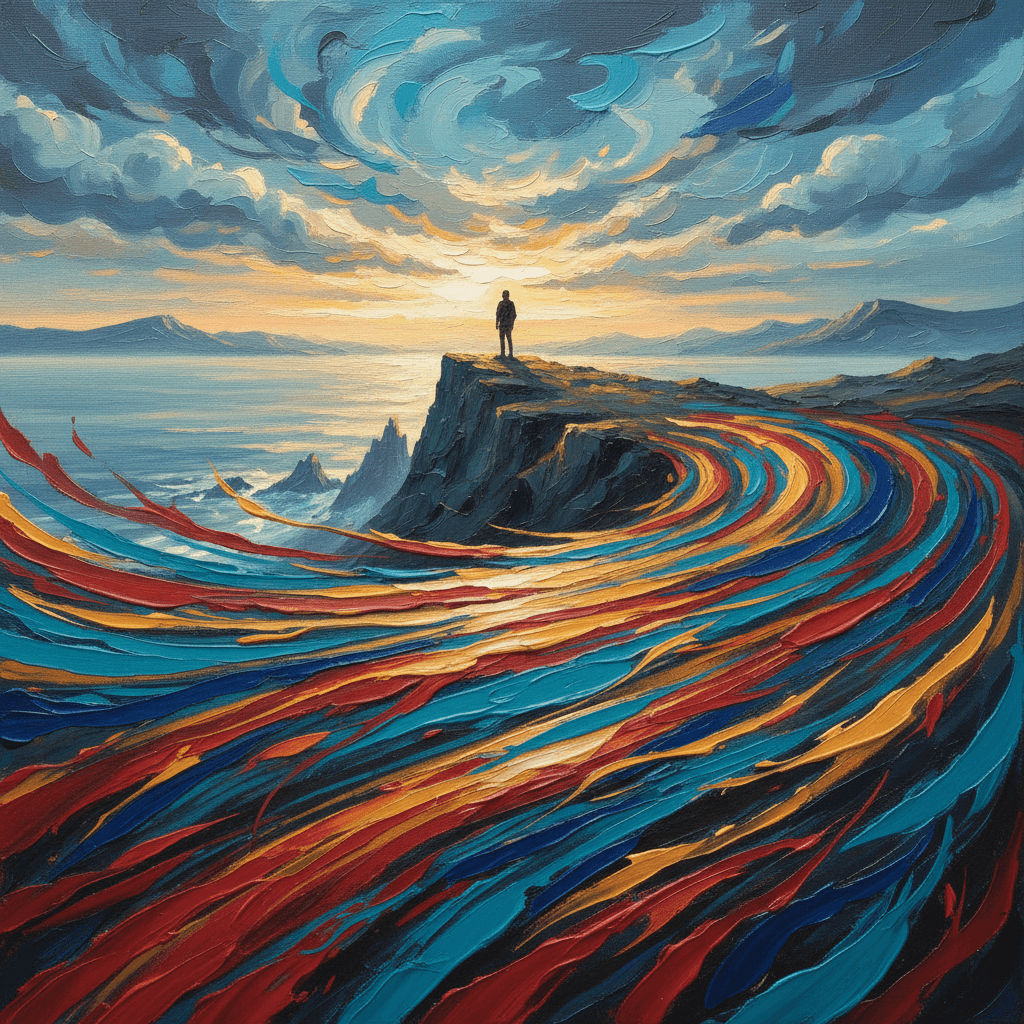Bold Strokes on Life’s Ever-Moving Canvas

Paint your inner winds with bold strokes; the canvas of life rewards the brave. — Virginia Woolf
Unfurling the Metaphor
At first glance, the line urges us to meet our shifting inner weather—gusts of fear, drafts of hope—with decisive color. To paint one’s “inner winds” is to turn turbulence into form; to choose bold strokes is to replace hesitation with commitment. The canvas, then, is the world that meets our gestures and records them in public view. True to Virginia Woolf’s lifelong attention to interior currents—her stream-of-consciousness in The Waves (1931) and the artistic struggle in To the Lighthouse (1927)—the sentence ties private feeling to courageous expression. In this way, bravery becomes not bluster but a disciplined readiness to translate the inchoate into lines we can live by.
Courage as Creative Method
Moving from metaphor to method, courage is not merely a trait; it is a technique for discovery. In creative work, clarity often follows action rather than precedes it, as brushwork reveals what sketches only guess. Teresa Amabile’s research on intrinsic motivation and creativity suggests that engagement driven by interest and purpose energizes risk-taking and yields novel ideas (Creativity in Context, 1996). Thus, boldness is less a leap into chaos than a structured gamble: a willingness to test an insight in the open, accept early awkwardness, and return to refine. Through this cycle, brave attempts become the scaffolding on which mastery is built.
How Bravery Rewires the Mind
Extending this logic, bravery alters perception and learning. William James’s pragmatic counsel—act as if, and the feeling follows—captures how action can train emotion (Principles of Psychology, 1890). Neuroscience adds detail: reward prediction error signals help the brain update beliefs when outcomes exceed or fall short of expectation, reinforcing adaptive risks (Schultz, Dayan, and Montague, 1997). In practice, each bold stroke provides feedback that weakens avoidance loops and strengthens approach habits, resembling exposure therapy’s graded steps. Over time, the mind’s weather calms not because the winds cease, but because the pilot learns new instruments.
Risk, Reward, and the Sweet Spot
Yet boldness works best at a discerning pitch. The Yerkes–Dodson law (1908) shows that performance rises with arousal until it tips into overwhelm; similarly, risks that are too safe stagnate, while those too extreme destabilize. Carol Dweck’s growth mindset research suggests recalibrating the target: value learning curves over immediate perfection (Mindset, 2006). Positioned there, the brave act is calibrated ambition—large enough to stretch skill, small enough to sustain momentum. In this sweet spot, the canvas “rewards” because outcomes—successes and intelligent failures—both compound into capability.
The Social Canvas We Paint On
Of course, not every canvas is equally primed. Woolf’s A Room of One’s Own (1929) argues that freedom to create requires material and social conditions—time, space, and resources. Bravery without access can be misread as futility; conversely, access without courage often withers into timidity. Recognizing this interplay invites two commitments: build personal daring and advocate for fairer frames—mentorships, safety nets, and inclusive institutions—so more hands can hold the brush. Thus, the brave stroke becomes both a private act of resolve and a public act of care.
Practices for Bolder Strokes
Practically, boldness can be trained. Implementation intentions—if-then plans—convert ideals into triggers for action (Gollwitzer, 1999). Deliberate practice targets specific weaknesses with feedback loops (Ericsson, Krampe, and Tesch-Römer, 1993). Add micro-bravery: daily, low-stakes experiments—sharing a draft, asking a hard question, seeking critique—that normalize exposure while protecting morale. Precommitment devices, time-boxed sprints, and a portfolio of small bets spread risk and magnify learning. By designing the studio of one’s habits, courage shifts from rare surge to repeatable craft.
Courage Without Recklessness
Even so, courage requires a moral compass. Aristotle’s Nicomachean Ethics places true courage between cowardice and rashness, guided by practical wisdom (Book III). Before a daring move, ask: What is the aim, the cost, and the reversibility? What protections shield others from unintended fallout? Framed this way, bold strokes serve meaning rather than ego, turning spectacle into stewardship. The canvas rewards not only the daring hand but the discerning heart behind it.
Rest, Rhythm, and Renewal
Finally, boldness breathes in rhythm. Woolf’s diaries note the restorative power of walking and reflection, rhythms that resemble creative incubation. Research on mind-wandering shows that stepping away can catalyze insight when we return to the work (Baird et al., 2012). Alternating focused effort with restful drift replenishes nerve and sharpens perception, ensuring that tomorrow’s strokes are not merely brave, but true. Thus the painter of a life learns cadence—wind, brush, pause, and then, again, color.